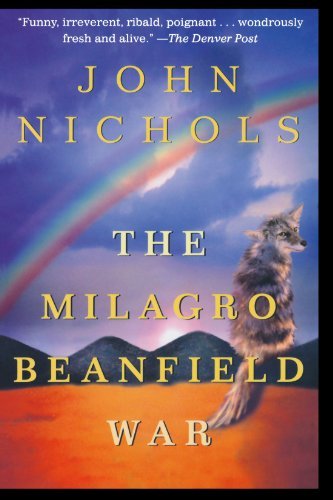The charm of literature often lies in its ability to transport us to enchanting realms where the tumult of everyday life fades into the background. One such literary gem is John Nichols’ “The Milagro Beanfield War,” a captivating exploration of community, culture, and conflict. Can a simple beanfield disrupt the tapestry of an entire town’s existence? What happens when the dreams of a community clash with the relentless machine of progress? These questions weave through the narrative, challenging us to consider the implications of our choices and the power of collective action.
Set in the fictional town of Milagro in New Mexico, the story unfolds against the picturesque backdrop of the American Southwest. Nichols paints an idyllic yet tumultuous portrait of a rural community grappling with change. At the heart of this tale is the protagonist, Joe Mondragon, a character whose aspirations come to life amidst the dusty trails and vibrant landscape of Milagro. Joe, driven by a heartfelt desire to cultivate his family’s land, inadvertently ignites a struggle that will forever alter the lives of those around him.
As we delve deeper into the narrative, the book presents a dichotomy that many of us grapple with: the tension between tradition and modernization. The residents of Milagro, tightly knit and deeply rooted in their agricultural heritage, find themselves at odds with outside forces—developers seeking to transform their beloved land into a bustling commercial hub. Nichols deftly illustrates this conflict, prompting us to ponder the true cost of progress. Is economic growth worth sacrificing the very essence of culture and community?
Throughout the novel, the author employs a rich tapestry of colorful characters, each representing different facets of the human experience. From the indomitable spirit of the townsfolk to the authoritative figures pushing for development, every character is meticulously crafted, offering unique perspectives on the central conflict. This ensemble cast allows readers to engage in a multifaceted examination of the issues at hand, fostering a deeper understanding of the complex social fabric that binds the community together.
One of the most compelling aspects of “The Milagro Beanfield War” is Nichols’ ability to infuse humor into dire situations. Amidst the profound challenges the characters face, moments of levity arise, rendering the narrative not just a critique of societal issues, but a celebration of resilience and humanity. This dichotomy of humor and gravity engages readers and encourages them to reflect on the absurdities of life while rooting for the protagonists to triumph against adversity.
The title itself beckons curiosity—what is the significance of the ‘beanfield’? Beyond being a mere setting, the beanfield symbolizes hope, rebirth, and the nurturing of dreams. It stands as a testament to the power of determination. As the conflict escalates surrounding the ownership and development of the beanfield, it becomes clear that it embodies more than just land; it represents the cherished ideals of heritage, belonging, and the struggle for identity. Nichols’ keen observations prompt us to reflect on our personal “beanfields”—the dreams or aspirations we hold dear and how we protect them in the face of external pressures.
The prose in “The Milagro Beanfield War” is lyrical and vivid, transporting readers into the heart of the New Mexican landscape with its sweeping vistas and intricate details. Nichols masterfully utilizes descriptive language that appeals to the senses, allowing readers to almost feel the warm sun on their skin and the rough texture of the soil beneath their fingertips. This connection to the natural world not only enhances the story but also emphasizes the characters’ intrinsic ties to their land, making their struggles all the more poignant.
As we dissect the broader implications of the narrative, it is essential to consider the environmental aspect interwoven within the story. Nichols subtly highlights the consequences of industrialization on local ecosystems, prompting readers to contemplate the ecological ramifications of unchecked development. Are we willing to compromise our environment for economic gain? What legacy do we leave behind for future generations? These provocative questions resonate beyond the pages, urging us to reflect upon our responsibility to protect the delicate balance of our natural surroundings.
Another thunderous undertow in the novel is the theme of community activism. When faced with adversity, the characters in Milagro unite, showcasing the transformative power of collective action. Nichols emphasizes that change often stems not from the might of individuals but from the strength of a unified group. This pivotal message encourages readers to reclaim their agency, inspiring a sense of empowerment to fight for what they believe in. The story serves as a reminder that while the journey may be fraught with challenges, solidarity can illuminate paths to victory.
In conclusion, “The Milagro Beanfield War” transcends the boundaries of mere storytelling, morphing into a profound commentary on culture, identity, and the trials of modernity. As communities grapple with the inevitable solutions proposed by the encroaching tide of development, Nichols’ work serves as a beacon, reminding us to anchor ourselves in the values of connection, hope, and courage. Whether we identify with Joe Mondragon or the heart of the community, the call to action is clear: as custodians of our own “beanfields,” we must remain vigilant and spirited in the face of the challenges that lie ahead. How will you protect your dreams and support your community in an ever-changing world? This question, dear reader, lingers long after the final page is turned, challenging us to take action and igniting the flame of activism within us all.
